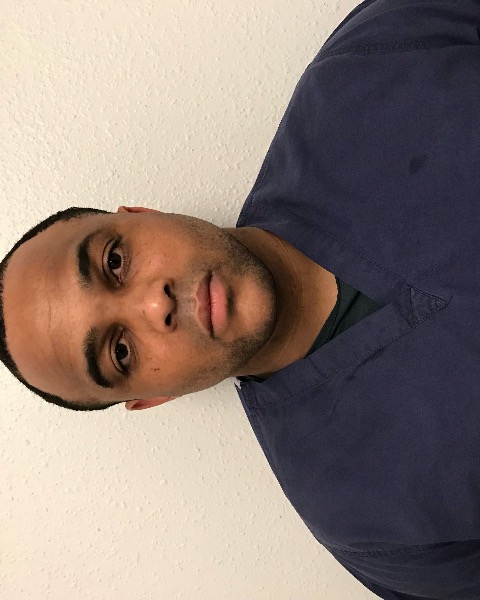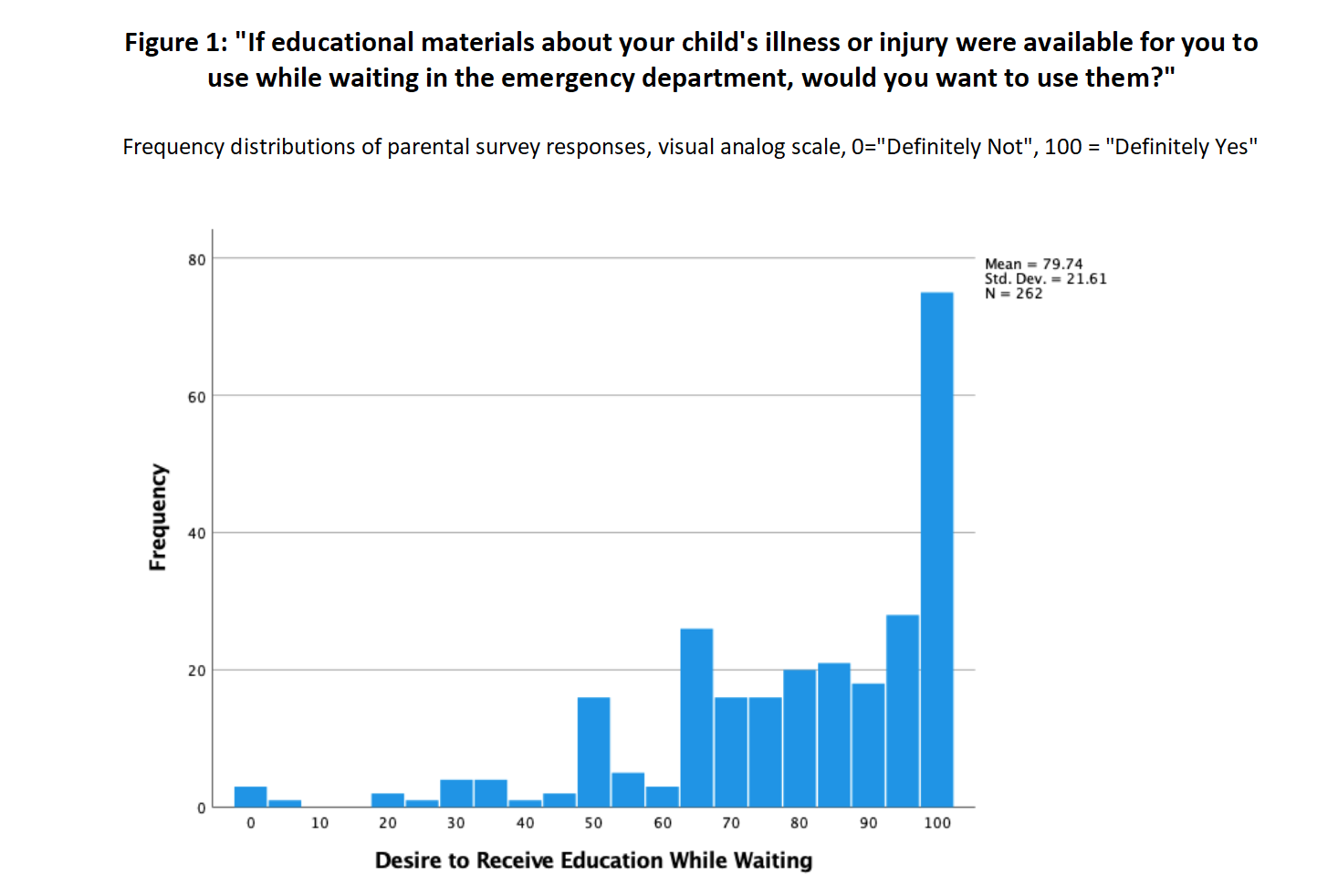Emergency Medicine: Quality Improvement
Category: Abstract Submission
Emergency Medicine XIV
55 - Parents’ Preferences Regarding Discharge Instructions in the Pediatric Emergency Department
Monday, April 25, 2022
3:30 PM - 6:00 PM US MT
Poster Number: 55
Publication Number: 55.407
Publication Number: 55.407
Darval E. Hutchinson, Children's of Mississippi, Brandon, MS, United States; Kerry J. Yancy, University of Mississippi Medical Center, Jackson, MS, United States; Sydney A. James, University of Mississippi School of Medicine, Jackson, MS, United States; Justin R. Davis, University of Mississippi Medical Center, Spring, TX, United States

Darval E. Hutchinson, DO
Fellow
Children's of Mississippi
Brandon, Mississippi, United States
Presenting Author(s)
Background:
Discharge instructions are important in the Pediatric Emergency Department (PED), but various deficiencies have been described, possibly contributing to issues such as high rates of missed follow-up and unfilled prescriptions. Although many efforts have been described to improve or augment discharge instructions, little is known about parents’ preferences.
Objective: Among children presenting to a single, urban PED within a tertiary care children’s hospital, we sought to determine which types of discharge instruction content and format are preferred by parents.
Design/Methods: Parents whose children presented with a common chief complaint to the PED completed a survey about their preferences regarding discharge instruction content and format. Content areas included: diagnosis, test results, illness/injury course, return precautions, medications, contraindicated treatments, additional information sources, and follow-up. Formats included: in-person presentations, written materials, video presentations, and multi-media/computer presentations.
Results: Parents (n=275) were very interested in instruction during the PED visit (mean 79/100, SD 22) [Figure 1] and preferred in-person presentations (34%, LCL 28, UCL 40) and written materials (33 %, LCL 28, UCL 40) over video (19%, LCL 14, UCL 23) and multimedia presentations (14%, LCL 10, UCL 18). The three highest scoring content areas were
“Diagnosis”
(534 points),
“Test Results”
(313), and
“Illness/Injury Course”
(268) [Table 1]. Parents preferred to receive any take-home materials on paper (59%, LCL 52, UCL 64) versus electronically (41%, LCL 36, UCL 47). When asked to choose among optional or extra resources, more parents preferred a ‘medical advice contact line’ (34%, LCL 28, UCL 39) or ‘receiving medications/equipment while in the PED’ (34%, LCL 28, UCL 40) versus ‘pre-scheduled follow up visits’ (24%, LCL 19, UCL 29) and ‘instruction videos or other materials for home use’ (8%, LCL 5, UCL 12).Conclusion(s):
Parents of children in the PED preferred in person and written discharge instruction formats, and were most often interested in instructions regarding diagnoses, test results and expected course of illness/injury. However, extensive variation was observed in parents’ preferences and a high-quality discharge instruction process in the PED should be individually tailored to parents’ needs.
Table 1.png) Discharge Education Content Preferences
Discharge Education Content Preferences
Figure 1 "If educational materials about your child's illness or injury were available for you to use while waiting in the emergency department, would you want to use them?"
"If educational materials about your child's illness or injury were available for you to use while waiting in the emergency department, would you want to use them?"
Discharge instructions are important in the Pediatric Emergency Department (PED), but various deficiencies have been described, possibly contributing to issues such as high rates of missed follow-up and unfilled prescriptions. Although many efforts have been described to improve or augment discharge instructions, little is known about parents’ preferences.
Objective: Among children presenting to a single, urban PED within a tertiary care children’s hospital, we sought to determine which types of discharge instruction content and format are preferred by parents.
Design/Methods: Parents whose children presented with a common chief complaint to the PED completed a survey about their preferences regarding discharge instruction content and format. Content areas included: diagnosis, test results, illness/injury course, return precautions, medications, contraindicated treatments, additional information sources, and follow-up. Formats included: in-person presentations, written materials, video presentations, and multi-media/computer presentations.
Results: Parents (n=275) were very interested in instruction during the PED visit (mean 79/100, SD 22) [Figure 1] and preferred in-person presentations (34%, LCL 28, UCL 40) and written materials (33 %, LCL 28, UCL 40) over video (19%, LCL 14, UCL 23) and multimedia presentations (14%, LCL 10, UCL 18). The three highest scoring content areas were
“Diagnosis”
(534 points),
“Test Results”
(313), and
“Illness/Injury Course”
(268) [Table 1]. Parents preferred to receive any take-home materials on paper (59%, LCL 52, UCL 64) versus electronically (41%, LCL 36, UCL 47). When asked to choose among optional or extra resources, more parents preferred a ‘medical advice contact line’ (34%, LCL 28, UCL 39) or ‘receiving medications/equipment while in the PED’ (34%, LCL 28, UCL 40) versus ‘pre-scheduled follow up visits’ (24%, LCL 19, UCL 29) and ‘instruction videos or other materials for home use’ (8%, LCL 5, UCL 12).Conclusion(s):
Parents of children in the PED preferred in person and written discharge instruction formats, and were most often interested in instructions regarding diagnoses, test results and expected course of illness/injury. However, extensive variation was observed in parents’ preferences and a high-quality discharge instruction process in the PED should be individually tailored to parents’ needs.
Table 1
.png) Discharge Education Content Preferences
Discharge Education Content PreferencesFigure 1
 "If educational materials about your child's illness or injury were available for you to use while waiting in the emergency department, would you want to use them?"
"If educational materials about your child's illness or injury were available for you to use while waiting in the emergency department, would you want to use them?"